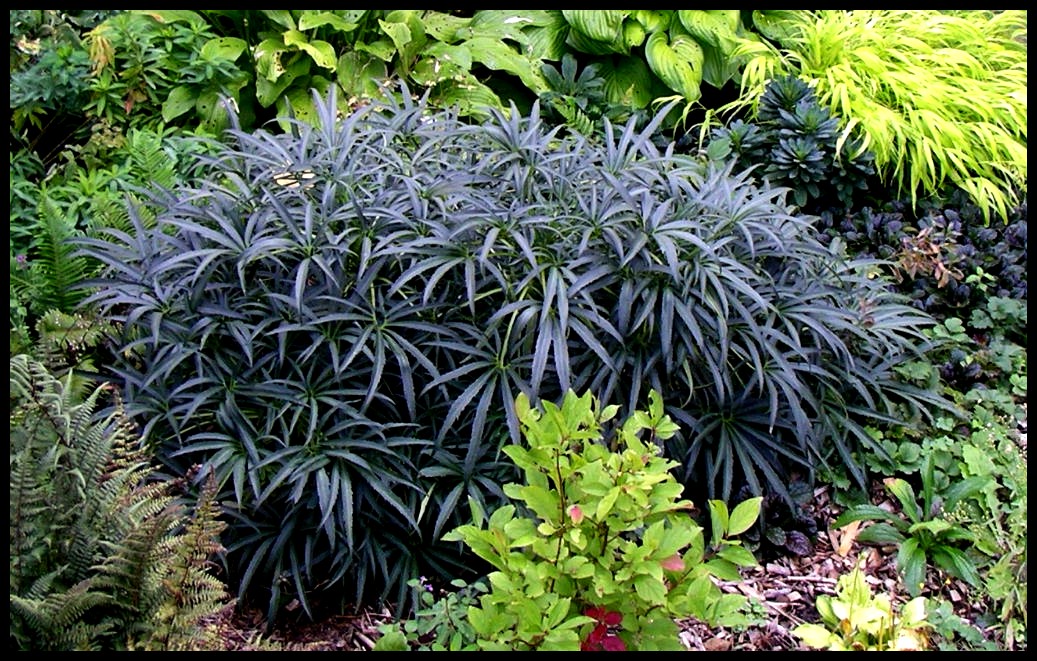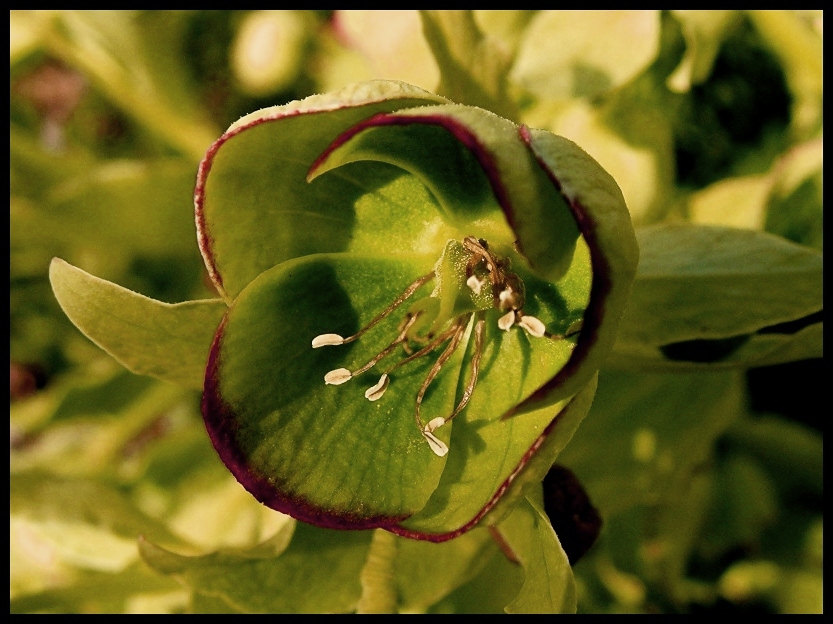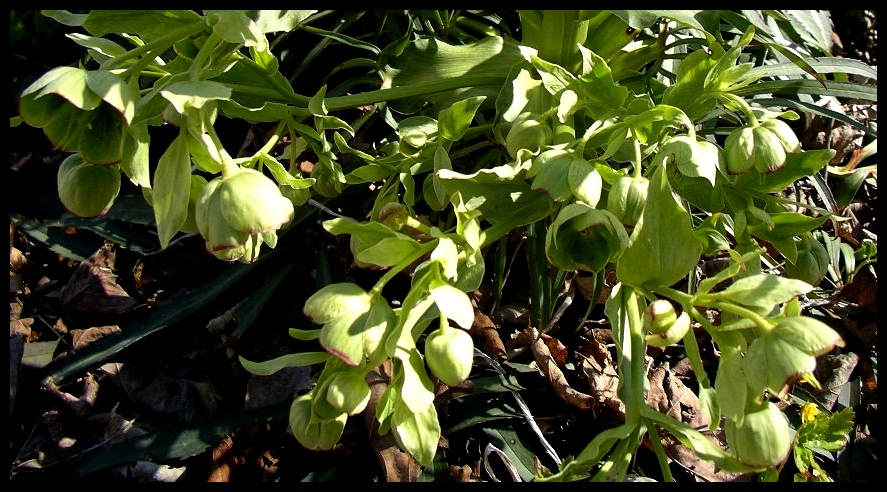Plant of the Month for October, 2012

(hel-eh-BORE-us FET-i-dus)
General Information:
The Stinking Hellebore! With a name like that, you just have to have one in your garden.
Helleborus foetidusis evergreen all year long and looks great in the shade garden, even in winter, covered in snow. It has palmately divided leaves of a dark blue-green colour that contrast nicely with other big leaved shade plants like hostas. The leaf colour gets darker in winter, and is lighter if given more sun in summer.

Helleborus foetidus ‘Wester Flisk’; photo by Robert Pavlis
Plants are reported to smell, particularly when they flower, but I have not noticed an unpleasant odour. They are also reported to be poisonous and their sap can irritate the skin. This makes them deer resistant.
Like other caulescent hellebores (ie visible above ground stems) they grow and flower quickly from seed, often blooming in their second year.

Helleborus foetidus ‘Wester Flisk’; photo by Robert Pavlis
In zone 5, the plant is fully hardy, but the flowers are just barely hardy. I suspect the wet springs are more damaging to the flowers than the cold. The buds which form in fall, turn to a black mush most springs here in zone 5. That is really not a big deal since the flowers are not that spectacular. They are small, green and pendent. They do open very early in the spring and are an important food source for bees and other insects at that time of year.

Helleborus foetidus ‘Wester Flisk’; photo by Robert Pavlis
Breeders are working on crossing regular hellebores that have colourful flowers with H. foetidus in order to produce plants that have both coloured flowers and great leaves.
A number of named clones of H. foetidus are available on the market, but several varieties look pretty much look the same. The pictures in this post are from H. foetidus ‘Wester Flisk’, which has redder stems than the species.
Life Cycle: perennial
Height:60cm (24 inch)
Bloom Time: mid to late summer
Natural Range: Europe
Habitat: woodland, scrub, open rocky areas to around 6,000 ft
Synonyms:none
Cultivation:
Light: full sun to full shade; prefers at least some shade
Soil:neutral to alkaline, moist rich soil
Water: drought tolerant once established
USDA Hardiness Zone:zone 5 - 8
Propagation: seed; does not like to be divided
Seedex availability (ORG&HPS annual Seed Exchange): available occasionally
